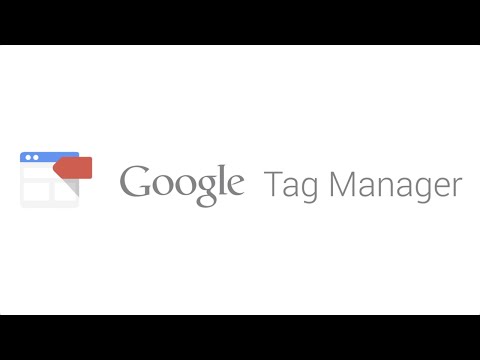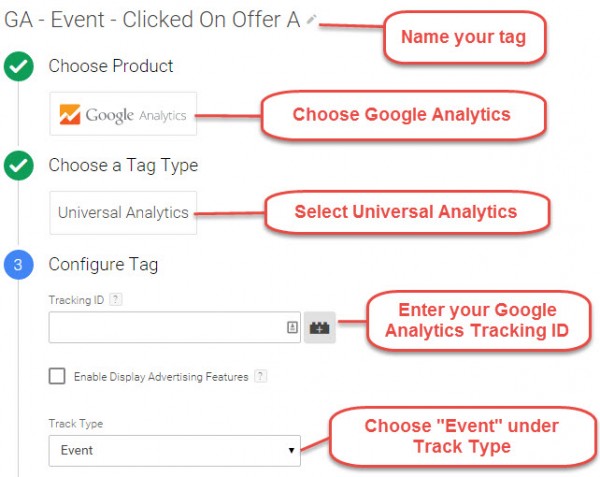8 Simple Techniques For Google Tag Manager Configuration
Table of ContentsGetting The Google Tag Manager Configuration To WorkGoogle Tag Manager Configuration Fundamentals ExplainedAll about Google Tag Manager ConfigurationHow Google Tag Manager Configuration can Save You Time, Stress, and Money.The Basic Principles Of Google Tag Manager Configuration How Google Tag Manager Configuration can Save You Time, Stress, and Money.

Yay! You have actually pertained to the finest component of the entire production procedure. All the job that you did to develop the tags is concerning fruition. To launch, click heaven button in the right-hand corner that states Submit. On the next screen, you'll see the alternative to develop a new version for these adjustments.
The first 4 are failsafe functions that will aid you protect against and recoup from any type of errors you could make within Google Tag Manager. These four failsafe features can help you protect against as well as recover from any kind of blunders you could make within Google Tag Manager. Work areas, Sneak Peeks, Variations, Third-Party Tags If you have several individuals operating in GTM, Workspaces makes it simple to work with something without even touching what various other individuals are dealing with. google tag manager configuration.

The Best Strategy To Use For Google Tag Manager Configuration
You can see that there are certain tags that are fired as well as ones that aren't. From there, you can determine what's working and also what's not before you release your new tags.
You can simply republish one of the previous versions of GTM.When you go to the Versions area of GTM, you'll be able to see when the last version was created as well as published, by that and the Version products such as tags, sets off, as well as variables. You'll additionally see the version adjustments that were made there.
Select Some Page Sights, to ensure that it does not cause on all web pages. That's a certain method to inflate your conversions without implying to. If you do not desire your tag to fire on all pages, you'll specify the pages below. Listed below that, you'll select the problems when the occasion happens. The initial dropdown has a variety of variables to select from.
The third area is where we specify the URL.In this case, the URL will consist of/ thank-you. Event tracking is a location where GTM can truly shine. Before GTM, if you intended to track occasions such as switch clicks and video plays, you would have a developer add the monitoring code for each and every.
Facts About Google Tag Manager Configuration Uncovered
Event tracking is super incredible. Has a client ever asked you the amount of times a visitor has clicked a link, video clip, or numerous buttons, as well as you just weren't sure? If yes, event monitoring is going to be your new BFF.Set your Built-In Variables. These are the ones we like to have as a default.
This makes it very easy when you start producing even more tags as well as sets off down the line. Do you ever before wonder if all that web content you produced is really obtaining eyeballs on it particularly listed below the layer?
To get started on this, create a trigger as well as name it something like DOM Ready, which simply indicates that the scroll deepness tag will fire when the DOM is all set - google tag manager configuration. DOM stands for Record Things Design.
As soon as this trigger is developed, move on to producing your tag. Pick Customized HTML in the Custom-made area of the tag types.
Top Guidelines Of Google Tag Manager Configuration
For each of the variables, you'll develop an Information Layer Variable in the Page Variable Types. Below's the starting web page check my reference for producing the following four variables. The four variables will certainly appear like the screenshots listed below: occasion, Classification variableevent, Action variableevent, Label variableevent, Value variable Once your variables are created, you'll wish to send that tracking information to the information layer.
Name your tag as well as pick Occasion as the Track Kind. Add in the variables that you simply developed to the types listed below. The four variables that you produced are added into the monitoring parameters. If you have actually the area entitled "Non-Interaction Hit" readied to "True," these occasions will not affect the site's bounce price.
The trigger type that you'll select is the Custom Occasion. Call your trigger, include the event name, and also save every little thing.
These can be available in helpful before the conversion or perhaps after the conversion. As an example, we have a client who, after their site visitors downloaded and install the white paper, were provided the option to download and install other PDFs. We wished to track this to see what visitors' passions are, so we can supply something different at afterward.
A Biased View of Google Tag Manager Configuration
To get started, you'll want to develop a few user-defined variables. Go to the Variables area in Google Tag Supervisor, as well as click to develop a new User-Defined Variable.
Then they go to the Pricing Web page, read some details, and after that shut the tab. In Google Analytics, the moment on the Rates Web page isn't counted. GA tracks the moment on website in between 2 hits, not the quantity of time invested in two pages. That's where Trigger Timers come to the rescue.
Now that that Timer Trigger is developed, you'll desire to develop a tag to push this event to GA.
Not all tags are produced equivalent, and you may want particular tags to fire prior to others. If you have a specific my sources order for which you desire your tags to fire, Tag Sequencing will certainly allow you to define if you want the tag to Get More Info fire before or after one more tag.
To leave out interior website traffic, develop a variable as well as name it IP Address. Select Information Layer Variable as the Variable type. Next off, you'll create the trigger to terminate this.